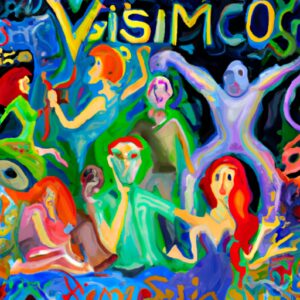How to say Goodbye in Italian
Greetings differ from culture to culture and from situation to situation.
Saying hello as well as goodbye makes an essential part of greetings.
So, what are the common ways to say goodbye in Italian?
In general, besides ‘arrivederci,’ you have probably heard phrases like ‘arrivederla’ which is a formal goodbye, and it means ‘until next time,’ or ‘alla prossima,’ which can be used as a casual goodbye.
Goodbye in Italian: Arrivederci
Arrivederci is a common way to say goodbye in Italy.
It can be used in any informal situation, and it’s a good way to end a conversation with your friends.
It literally means ‘until we see each other again,’ directly implying that you will meet again.
It’s mostly a routine greeting, and you will hear it almost everywhere. If you’re in a formal environment, though, you will want to use ‘arrivederla.’
A Domani!
‘A domani’ means ‘see you tomorrow.’
You can use it when you’re leaving the office or when you’re saying goodbye to the barista after you get your coffee.
It’s simply implying that the same routine will happen again.
A Presto!
This goodbye means ‘see you soon.’
You can use it when you are leaving a friend’s house or when you run into your co-worker on the street.
The warmth of this greeting is contextual: it can be matter-of-fact or not.
If you are leaving people you care about, the weight of the implied hope of meeting again depends on the shared affection, but certainly, hope colors it.
Ci Vediamo Presto!
‘Ci vediamo presto’ means ‘we’ll meet each other again.’
Use it when you know you are going to see the other person again or when you hope you will.
You can also use ‘ci sentiamo presto,’ which means ‘we’ll hear from each other again,’ or ‘a risentirci presto,’ meaning ‘talk soon.’
The latter can be successfully used in a phone conversation.
Alla Prossima!
Meaning ‘until next time’ or ‘to the next time,’ it can be used when you are looking forward to the next meeting you will have with the person, regardless of when that may be.
You can use this greeting with friends and acquaintances, and it leaves the future unknown.
You may not be sure when you’ll meet again, but you are sure you will.
Buonanotte!
‘Buonanotte’ simply means ‘good night.’ It’s a good phrase to use before you are going to bed.
If you’re leaving a conversation early, though, and it’s expected to resume in the morning, you can say ‘buona serata,’ as a ‘good evening.’
Torna Presto!
This goodbye literally means ‘come back soon.’
You may use it from friends and acquaintances you made on your trip to Italy or when you’re leaving a coffee shop.
There is also ‘torna presto a trovarci’ which means ‘come visit us again soon.’
Buon Viaggio!
You can use this phrase whenever someone is leaving on a trip.
It means ‘have a nice trip,’ and you’re wishing that upon them.
You may hear it when you tell your Italian friends that you are going back home.
You can also use one of these:
- Buono studio – Good luck with your studies
- Buon lavoro – Good luck with your work
- Buona giornata – Have a good day
- Buona serata – Have a good evening
- Buon divertimento – Have a good time
- Buon rientro – Have a safe return
Buon Proseguimento
When you’re saying ‘buon proseguimento,’ you’re saying ‘good pursuits.’
The phrase is a wish for you to enjoy the rest of whatever you were doing when the conversation with your interlocutor started, be it resuming a trip, continuing a walk, or continuing a visit with someone.
You may hear it after someone comes to talk to you when you’re in a restaurant or when they stop you on the street to say hello.
Addio!
‘Addio’ means ‘farewell.’
Even though it’s supposed to be a final goodbye, in many places around Italy, such as Tuscany, it’s used on a regular basis as a normal goodbye in Italian.
You may want to see how the locals are using it before actually using it.
Here’s a beautiful art song by F. P. Tosti named “Addio” sung by the Italian tenor Carlo Bergonzi. Lyrics here.

Ciao!
This is yet another versatile greeting that can be used for both arrival and departure.
Because there are so few languages where this happens, Italian students typically find it confusing at first.
For arrival and departure, most languages use different formulas.
Can you think of another language with a formula that works for both hello and goodbye?
If you do, please leave us a comment below; we’re eager to learn new things about languages!
Nowadays, ciao is widely used in many languages around the world (often to mean “goodbye” rather than “hello”), often spelled differently.
But do you know where this term originated? (To summarize, it is Venetian in origin and means “I am at your service.”)
Ciao is an informal Italian term that means “goodbye.”
It can be used with friends, family, young people, and other persons in casual situations.
Even in professional situations, addressing individuals informally is becoming increasingly prevalent.
This is especially true in fields relating to the new economy or the world of creativity.
You may also come across the “doubled-up” form: Ciao, ciao! This usually indicates that someone is going away in a hurry.
Learn more about the meaning of Ciao and how to use it here.
Other ways to say goodbye in Italian
Of course, there are a few more variations of goodbye in Italian you can use, but it’s very situational.
For example, if you want to tell your hosts how much you enjoyed everything, you can say ‘mi è piaciuto molto,’ which can be translated as ‘I had a great time’ or ‘I liked it a lot.’
It’s not a traditional phrase, but you can show your appreciation through it.
You can also say ‘è stata una bellissima giornata (visita, serata)’ to express how much you enjoyed the day, visit, or night together with your hosts.
Other common ways are:
- A dopo – See you later.
- A fra poco – See you in a little
- A stasera – See you tonight
- (Arrivederci) all’anno prossimo – See you next year
- (Arrivederci) a lunedì (prossimo) – See you next Monday
Need to practice the days of the week? Read our complete guide.
Goodbye, hello, how are you
Out of all these ways of saying goodbye, you will definitely find one to use in every situation!
Now that you know how to say goodbye to someone, other basic Italian expressions that you need to know are:
- How are you in Italian
- Hello in Italian
- Happy birthday in Italian
- Congratulations in Italian
- I miss you in Italian









